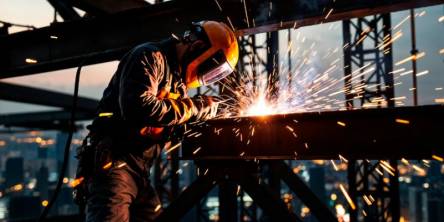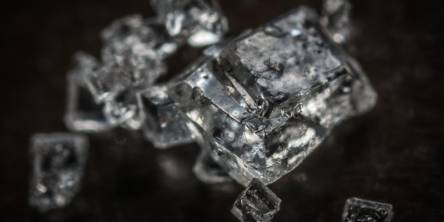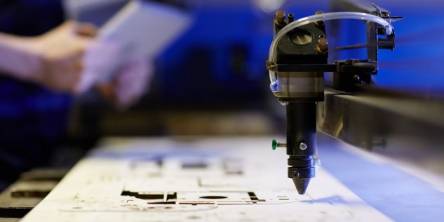Effects of Furnace Slip on the Wafer Strength
The silicon wafers are strong at room temperature, but they become weaker as the temperature is increased. The furnace manufacturing steps are essential for the processing of IC’s (integrated circuits). During this process, a non-uniform high temperature produces a non-uniform expansion within the wafer. Therefore, a consequential thermal stress can cause restricted or extensive furnace slip.
It obstructs the formation of silicon crystalline structure and completely decomposes the electrical and physical features of the wafer. The dislocations that are formed by slip can cause gate oxide integrity collapse, severe junction leakage, and untimely breakdown. The physical deformation can cause wafer breakage, pattern misalignment, chucking problems, and focus instability.
A non-uniform temperature is produced in the silicon wafer during temperature furnace push. This causes a bright beaming energy from the kiln tube to heat up the wafer edge prior than the wafer center. This can also cause slip around the silicon wafer edge and the deformation of the silicon wafer. During temperature ramp-down and furnace pull, the wafer cools earlier at the edges than in the center. This causes temperature non-uniformity at the wafer center and causes the wafer to bend.
After years of experience in fabrication of ICs (on silicon wafers), engineers revealed that furnace slip has always created a problem. The engineers have always faced problems in increasing the speed of furnace, temperature ramps and push-pull to maximize the furnace output. However, at the same it is also necessary to restrain the speed of temperature ramps and push-pull to prevent wafer damage. Whenever a new IC technology produces extreme built-in device stress, the balance shifts. This is because furnace recipes which had earlier created slip-free silicon wafers became recipes that created massive furnace slip.
In the thermal cycling process, the stress which occurs on oxide is used on the trench of sidewalls. The thermal stress created due to temperature non-uniformities in the wafer generate slip dislocations and shift those dislocations into the leakage sensitive area of the device. Now days IC devices with STI structures can be fabricated easily by moderating both the furnace stress and the built-in IC device stress.
Temperature is the most important factor that controls the strength of the thermal oxide silicon wafers, and this must be kept in mind when setting temperature ramping and furnace pull/push conditions. The strength of the wafer decreases drastically when the temperature is increased from 700°C to 800°C. If wafers are pulled or pushed into a furnace with the tube set at 800°C, the slip creates problem and can damage it. Therefore, the strength of the wafer is inversely proportional to the increase in temperature. It is essential to use lower ramping rates for higher temperature ranges to prevent wafer slip during furnace temperature ramping.
Other factors that affect the strength of the silicon wafer:
- The higher the density of dislocations in a thermal oxide silicon wafer, the weaker the wafer. It takes a large stress to create a dislocation, but only a small stress can cause an existing dislocation to multiply or move.
- The higher the interstitial oxygen concentration, the stronger the wafer. Dissolved or interstitial oxygen atoms connect themselves with dislocations and stop them from multiplying.
- The higher the amount of precipitated oxygen, the weaker the wafer. Increasing oxygen precipitates use up the interstitial oxygen and blow out the new dislocations.
- The higher the concentration of dopant atoms, the stronger the silicon wafers. The damaged fields around atoms, which are larger or smaller than the silicon atoms, obstruct the motion of dislocations.
- Integrated circuit films can apply stress on the underlying silicon wafers and make slip more appropriate. Trench and other IC structures, as well as mechanical damage issues, can deteriorate the wafer by acting as stress concentrators.
Similar Articles
When you see a steel ship in the harbor, the first impression is usually sheer scale.
Explore CNC turning—its components, process, benefits, applications, and future trends shaping modern precision manufacturing in various industries.
In the competitive industry of car manufacturing, attaining exceptional performance along with an innovative design needs the incorporation of modern manufacturing technologies
Facing delays, quality issues, or supply chain problems in hardware manufacturing? Learn the top 7 challenges—and practical fixes—to streamline production.
In the rapidly advancing landscape of high-tech manufacturing, electronics, and materials science, diamonds are no longer just gemstones they’re high-performance materials redefining what’s possible in technology.
A business in the manufacturing industry today has to ensure that it chooses the precision-engineered components suppliers keenly since the competition is very stiff
Selective Laser Sintering, or SLS, has established itself as one of the most reliable and widely used 3D printing technologies. This method is valued for its ability to produce complex, durable, and high-quality parts without the constraints of traditional manufacturing.
In the retail and display industry, the visual appeal of products is paramount. Customers are constantly drawn to displays that are not only eye-catching but also provide an immersive experience.
As previously established, CO2 laser technology operates by shining a high-power infrared beam on a mixture of gas that contains carbon dioxide, nitrogen, and helium. This technology is well known for the fact that it is able to engrave onto a variety of materials such as wood, glass, plastic, leather, and even some metals with high precision and without contact.









